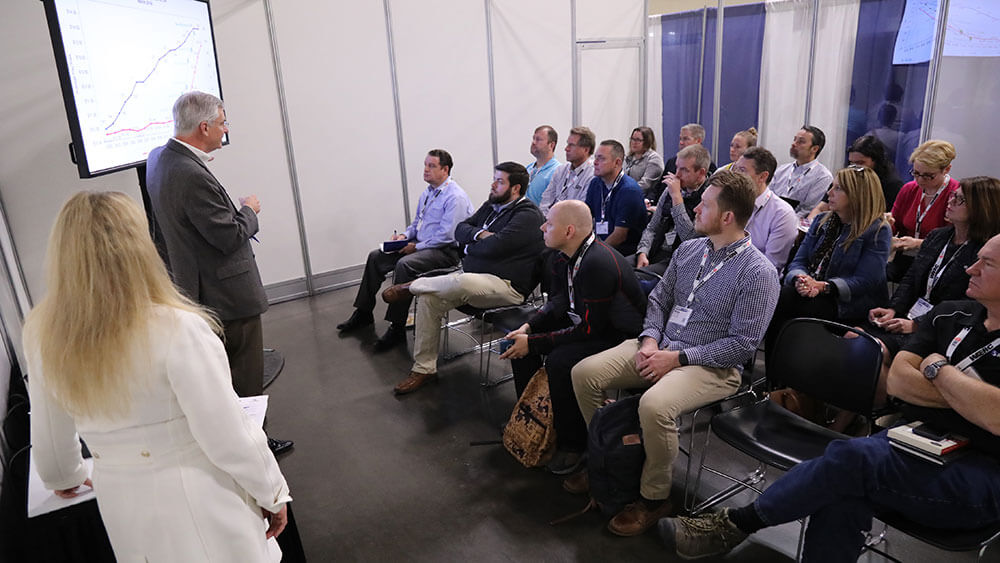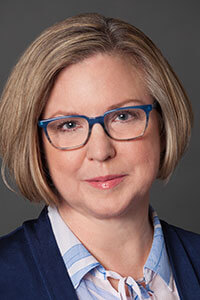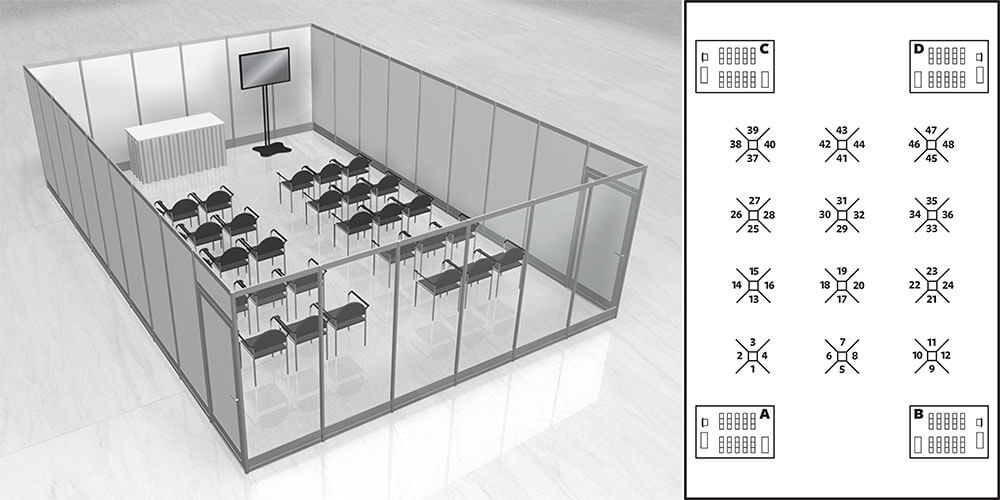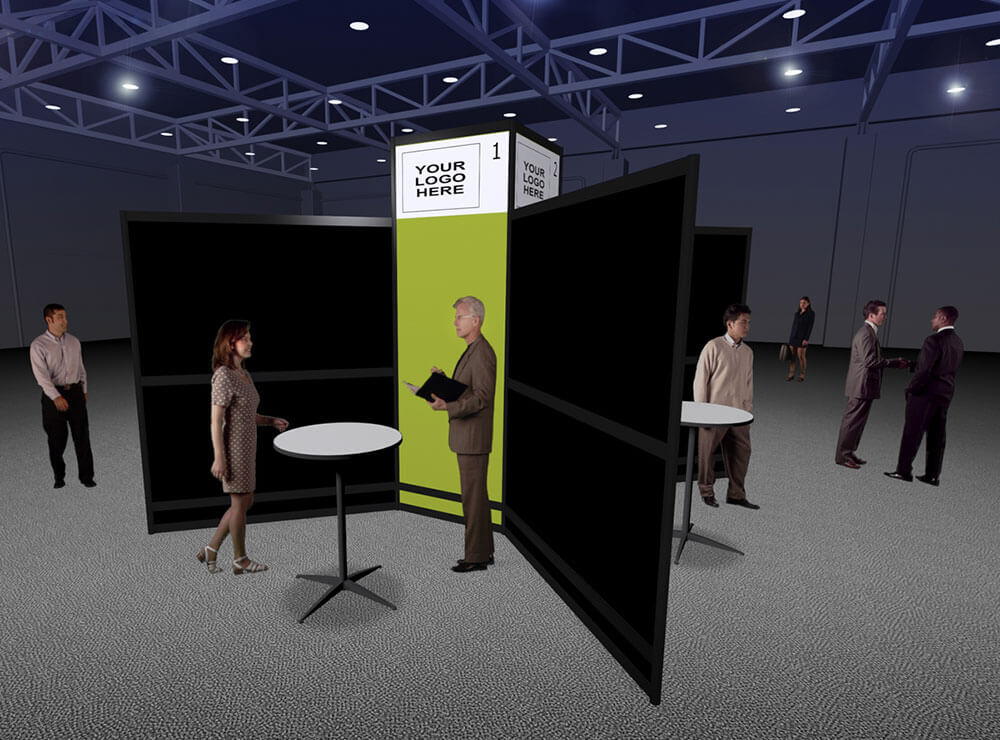
The Warehousing Education and Research Council (WERC) tested out the Solutions Studio Sessions approach with learning pods at the 2018 and 2019 conventions.
Approximately 1,000 logistics professionals attend the Warehousing Education and Research Council (WERC) conference each year. When they convene in Providence, Rhode Island, May 3–6, 2020, they won’t be able to find the usual exhibit hall at the Providence Convention Center — not for lack of signage but because the event’s overhauled trade-show floor bears little resemblance to its previous version.

Angie Silberhorn
WERC’s exhibit hall has been “on the decline for the past five years in terms of attendee satisfaction,” Angie Silberhorn, CMP, told Convene. Based on word-of-mouth buzz from attendees, input from a conference committee, and surveys of attendees and non-attendees, Silberhorn, who serves as WERC’s vice president of events strategy and operations, said it was clear that the trade-show floor was not the most valued piece of the conference experience.
“We previously offered six unopposed hours in the program that featured food and beverage in the exhibit hall,” she said. “Even with that open window, attendees were spending less than three hours in the hall.”
Silberhorn said that even though WERC had been working to push “the total conference engagement concept with exhibitors” — encouraging them to go to education sessions and find other opportunities to engage with their target buyers — “they weren’t wrapping their arms around it. Some were showing up and simply staffing their booths for six hours and leaving dissatisfied with the number of leads they received.”
While many exhibitors weren’t getting out of the stay-in-the-booth mentality, Silberhorn said that part of the problem was environmental. “They were still treating it like a trade show because it looked like a trade show,” she said. “We said it can no longer feel like a traditional trade show because it’s not working.”

Solutions Studio Sessions will be located in the hall’s corners with Solutions Stations — one-on-one meetings — in the middle.
Developing a Smart Solution
In past years, between 80 and 100 companies have purchased booths — all of which are smaller than 20-by-20-feet. For the 2020 annual conference, those real-estate parcels will be replaced with Solutions Studio Sessions, designed to provide learning settings where attendees can gain insights into the value of products and services. Silberhorn thinks the new format will eliminate what can be an uncomfortable dynamic — the pressure to sell — and instead create a setting that fosters authentic relationship-building.
Ditching the traditional model seems a bold move, but it has been several years in the making — “part of an evolution for the organization,” Silberhorn said. She has been preparing for this next step with a two-year trial program, in which these opportunities were sold “under the umbrella of ‘learning pods,’” she said, “among the booths.”
The beta test program offered 16, 20-minute-session slots, each accommodating up to 24 attendees. In 2019, 14 of them were filled in advance — attendees can pre-register for their seats online — and the remainder were packed to capacity on site. In 2020, the pods will be renamed Solutions Studio Sessions, and the available time slots will increase to 50, expand in length to 30 minutes, and add capacity to accommodate 30 attendees.
The beta test proved that it’s a framework that works for both attendees and exhibitors. “We know we have demand from attendees for these,” Silberhorn said. “And our exhibitors get a list of the individuals who sign up for their sessions,” thereby granting WERC permission to share their data, along with information from lead scanning to see who attended. “So they’ll walk away with 30 leads,” she said. “In the past, some of our exhibitors may have left with fewer than 30 leads from the entire show.”
Whether those leads amount to actual business will, of course, depend on each session’s effectiveness. Silberhorn said that she is “taking a realistic view of year one,” acknowledging that exhibitors will need to make significant adjustments to the usual booth mindset.
“There is definitely a big learning curve here,” she said. WERC will suggest to its solutions partners that they “revisit who they send. Your regional sales representative who is accustomed to sitting in the booth may not be comfortable with leading a presentation. It may be wise to send someone with deeper product expertise.”

Solutions Stations are designated meeting spots for suppliers and buyers.
Providing a Place to Meet
Past exhibitors aren’t the only stakeholders affected by the new model. Silberhorn knew that GES, which served as a show-décor partner for all those booths, would be impacted, too.
“When I first went to our GES partners, I was a little nervous,” she said. “I fully understand their revenue streams. To their credit, they didn’t blink. They immediately asked how they could help and said they wanted to continue to partner. That was a big relief.” Silberhorn said that GES brain- stormed ideas that could continue to help facilitate buyer-supplier connections — the concept that will debut in 2020 is called Solutions Stations. “It’s a minimalist meeting spot,” Silberhorn said. “We talked with some of our past exhibitors who said that they still wanted a spot where they can meet with people.”
Chris Murtha, a WERC conference committee member and director of brand marketing for Yale Materials Handling Corp., said his company is excited about the opportunity to connect directly with WERC attendees at Solutions Studio Sessions. “With the advent of internet and social-media marketing, the reality is that people don’t really engage at trade shows
to stay current the way they used to,” Murtha said in a press release about the new format, which he called “a game-changer.” He added: “The real benefit of the WERC conference is that we meet face-to-face with top distribution and logistics industry leaders from across North America. The new Solutions Studio Sessions will make it so much easier to identify and connect with those businesses that can most benefit from what we have to offer. That’s the whole point of attending.”
It’s Not for Everyone
While WERC’s Angie Silberhorn is confident the new approach — Solutions Studio Sessions and Solutions Stations — will be a success at the 2020 Annual Conference, she said that she recognized that the new model wouldn’t work for every event in other industries. “We are not a huge show,” she said, “which is a big part of what allows us to be nimble and explore this new concept.”
While WERC may be breaking up with booths, Silberhorn said that those 10-by-10-feet and 10-by-20-feet industry staples play a pivotal role in the success of many events and their stakeholders.
“There is still — 100 percent — a place for traditional trade shows,” she said. “Those serve a real need in business, and participants understand the benefits. But for those of us who are designing education-first conventions and conferences, we all have to focus on meeting the needs of our attendees first. If they’re footing the majority of the bill, the experience has to focus on delivering learning opportunities to help them in their careers.”
David McMillin is an associate editor at Convene.
